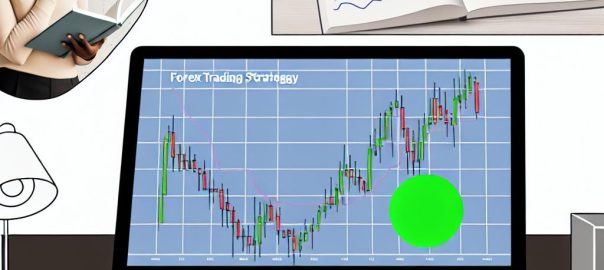A Simple Forex Trading Strategy for Beginners
Trading in the foreign exchange market, or forex, can be a rewarding venture, especially for those who are new to trading. This guide introduces a straightforward strategy designed to help beginners navigate the complexities of forex trading without becoming overwhelmed by the vast amount of information available.
Understanding the Basics
In forex trading, currencies are traded in pairs. This means when you are buying one currency, you are simultaneously selling another. The ultimate aim here is to profit from changes in the exchange rate. Beginners often start with major currency pairs such as EUR/USD or USD/JPY due to their high liquidity and comparatively lower spreads, which makes them easier and cheaper to trade.
The Trend-Following Strategy
One of the simplest yet effective strategies for beginners is the trend-following strategy. This approach involves identifying a prevailing market trend and making trades that align with this trend. The basic premise of this strategy is that prices are more likely to continue moving in the same direction rather than experiencing sudden shifts. Thus, by trading in the direction of the trend, traders can maximize their potential for profit.
Steps to Implement the Trend-Following Strategy
Step 1: Identify the Trend
Start by using various technical analysis tools to determine the overall direction of the market trend. Moving averages are one of the most commonly used indicators for this purpose. Many traders use the 50-day or 100-day moving average. If the price remains above the moving average, it indicates an uptrend, while a price below the moving average points to a downtrend.
Step 2: Confirm the Trend
After identifying a probable trend, use additional technical indicators to confirm its strength and reliability. Tools such as the Relative Strength Index (RSI) or Moving Average Convergence Divergence (MACD) can be employed here. An RSI value above 70 might indicate that the market is overbought, while a value below 30 could suggest it is oversold. These insights can help in determining whether the trend is likely to persist.
Step 3: Determine Entry Points
Once you have confirmed the trend, look for opportunities to enter trades. This is typically done during pullbacks when the price temporarily reverses before resuming its trend. By entering the market after a pullback, traders increase their chances of getting in at a more favorable price, enhancing the potential for profits.
Step 4: Place a Stop-Loss
Risk management is an integral component of any trading strategy. To safeguard your investment, it is crucial to place a stop-loss order. In an uptrend, set the stop-loss slightly below the recent low, and in a downtrend, position it just above the recent high. This measure limits potential losses if the market moves against your position.
Step 5: Set Profit Targets
Establishing profit targets is equally important as part of a controlled trading approach. Some traders opt for a risk-reward ratio like 1:2, which means they aim for a potential reward that is twice the size of the potential risk. By doing so, even if only a portion of trades yield profits, the overall strategy might still be successful.
Building Consistency and Patience
Consistency and patience are key attributes in developing successful trading habits. Beginners are advised to practice the trend-following strategy using a demo account before transitioning to live trading. Demo accounts provide an opportunity to experiment and gain experience with real-time market data without any financial risk. It’s also beneficial to keep a trading journal, recording decisions, outcomes, and reflections on each trade. This journal can serve as a valuable tool for learning and improvement.
Additionally, engaging with in-depth resources and continuous learning is vital. While the trend-following strategy is simple, market conditions are dynamic. Staying informed and adaptable is crucial for long-term success. For those seeking further educational resources, numerous online platforms offer comprehensive guides on both technical and fundamental analysis. One such resource includes platforms like Investopedia, which provide extensive forex learning materials and tools tailored to beginners.
Employing a disciplined approach to trading, combined with a reliable strategy like the trend-following method, can establish a solid foundation for success in forex trading. While no strategy can ever guarantee profits, understanding and utilizing proven strategies such as these can help beginners build confidence and improve their trade execution skills. As beginners gain experience, they can explore more advanced strategies and refine their trading approach, but starting with a simple yet effective approach can pave the path for future success.




